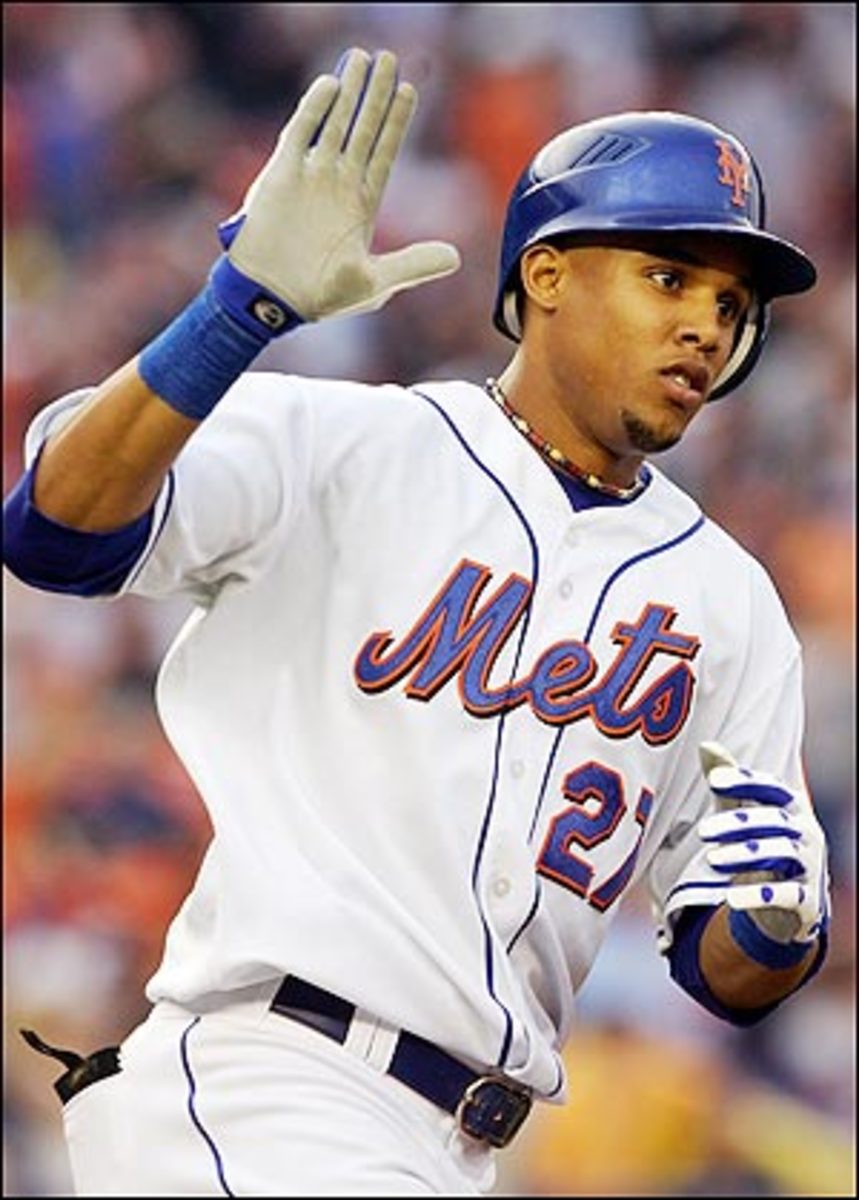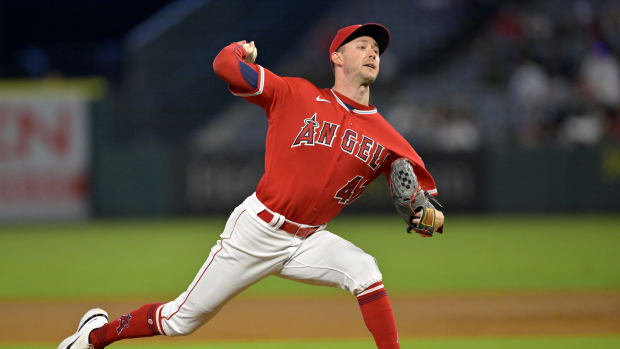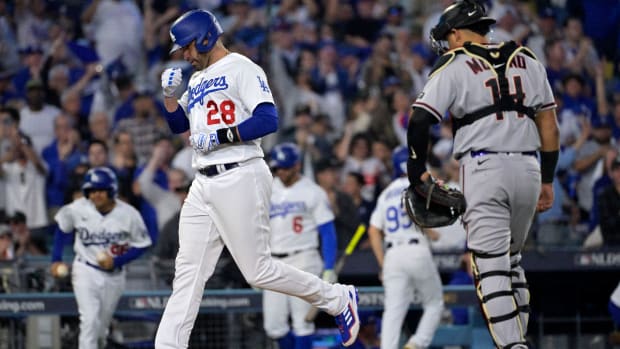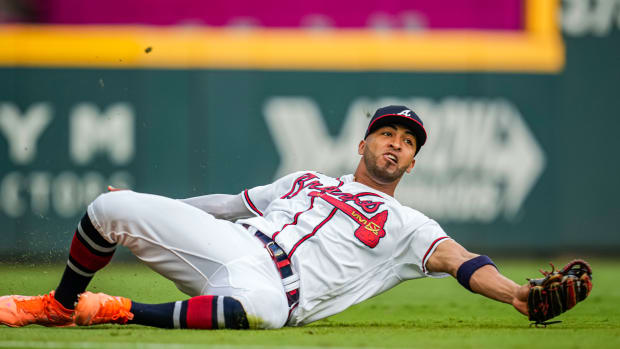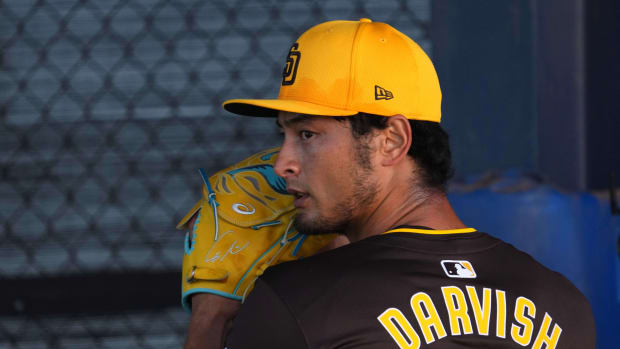System upgrade?
With the much-rumored Johan Santana deal finally going down, the Twins' prospect rankings are transformed significantly, so let's take a look at where the system stands now.
Five-Star Prospects
None
Four-Star Prospects
1. Carlos Gomez, CF
2. Deolis Guerra, RHP
3. Ben Revere, CF
Three-Star Prospects
4. Anthony Swarzak, RHP
5. Philip Humber, RHP
6. Jeff Manship, RHP
7. Tyler Robertson, LHP
8. Kevin Mulvey, RHP
9. Nick Blackburn, RHP
10. Brian Duensing, LHP
11. Trevor Plouffe, SS
So the Mets provided the Twins with their new top pair of prospects in the deal, but one of the big questions is, why wasn't it three? How the Twins dealt Santana to an organization with a bad minor league system without getting its top prospect is beyond me. For now, however, let's focus on what the Twins did get in return, and where they fit into the team's future plans.
Gomez is the top prospect here, but most of his ability is still bottled up in projection. The Mets were forced to bring him up last year due to injuries, which was a disservice to his development, as his long-term future would have been much better served by a year of consistent playing time in the majors to continue working on the many raw aspects of his game.
Gomez is now the best all-around athlete in the Twins system, surpassing Revere and outfielder Joe Benson, but what fans saw in New York was far more potential than production. Gomez's ceiling is tremendous, based solely on his athleticism. He's a plus-plus runner and an outstanding center fielder with a cannon arm. At the plate he should be a good hitter with gap power, but he needs to make significant changes in his approach in order to take advantage of his raw skills.
Gomez immediately enters the battle to fill Minnesota's wide-open center field job, actually bringing more experience and upside than any of the other prospect candidates Jason Pridie and Denard Span although Craig Monroe is on hand, in a box marked "break glass, in case of emergency." The good news is that Gomez instantly gives the Twins a new best candidate for the job. The bad news is that, once again, a full year in the minors would probably be best for him, especially in the long term.
Guerra is the pitching version of Gomez, only his age, level, and the fact that he's a pitcher create even more risk. Obviously, it takes a highly impressive talent to hold your own at high-A ball as an 18-year-old, but at the same time, Guerra was simply decent, not dominant. His low-90s fastball touches 95 mph and his body offers a ton of projection, but that's all Guerra really is projection. His control and changeup are advanced for his age, but at the same time, he doesn't have a usable breaking ball yet, and he's had injury issues in each of his first two years, so he's yet to even throw 100 innings in a season. If he was an easy Top 50 prospect next year, I wouldn't be surprised. On the other hand, if he was not even up for consideration on the list next year, I wouldn't be surprised by that either.
After making an impressive return from Tommy John surgery in 2006, Humber took a big step backward last season, and nobody has a good explanation as to what happened. His fastball dropped from consistently in the low 90s to more of the 88-91 range, and his curveball went from a plus-plus pitch to merely above average. The third overall pick in the 2004 draft, scouts no longer see Humber as an above-average or even average starter in the big leagues; he now projects more as a solid back-end piece in a big-league rotation, and he'll compete for that job in spring training now that the Twins rotation suddenly has another opening.
While Mulvey had an impressive full-season debut at Double A, it's very difficult to find a scout who's anything more than lukewarm about his future. His velocity, slider and changeup or all average, though he has decent command. He's far more a guy who gets by on mixing his pitches, hitting his spots, depending on his defense, and keeping his team in the game than anything else. His projection is similar to, if not a little less than, Humber's, and he's probably a year away from reaching it, likely beginning the year at Triple A Rochester.
Let's talk about the trade itself for the moment, because I've convinced myself that the trade could possibly represent a watershed moment in the game, where an elite player is certainly worth more monetarily, but not as much in talent, as a very good player. Compare these two lists of players for a moment:
1. Carlos Gomez, Deolis Guerra, Philip Humber, Kevin Mulvey
2. Brett Anderson, Chris Carter, Aaron Cunningham, Dana Eveland, Carlos Gonzalez, Greg Smith
Look at those two lists and consider them each for at least one minute.
The first list is of the players the Twins will get in the Santana trade, the second represents those Oakland got back when it dealt Dan Haren to Arizona earlier this offseason. Which list of players would you want to add to your team more? It's pretty apparent that the second is the better package, and I've bounced this off of many people inside the game, and the general consensus is that I'm not crazy. Now, I could be totally wrong here as well; teams maintain their own prospect lists, and I'm quite certain that many teams have Gomez and Guerra ranked much higher than I do. However, based on their history of scouting, drafting and player development, which tends to favor skills and fundamentals over tools and athleticism, I doubt the Twins are one of those teams.
So what does this mean exactly? Did the Twins make a massive mistake here?
Here are some takeaways I have from the deal. First, the supply and demand aspect of the Haren and Santana deals inflated Haren's value, and greatly reduced Santana's. Haren's availability drew interest from other teams in no small part because Haren's contract was manageable. Santana's availability could only bring interest from teams that could afford a record-breaking extension, and that subset was reduced even greater by the number of teams willing to pay him such money. Fewer bidders means a lower price, so on the market a talent like Haren is now worth more than Santana, as illogical as that sounds, while on a purely monetary basis, Santana is worth more. It's a strange duality that could become more and more common as baseball's talent/money scale becomes even more unbalanced.
My second point is more of an indictment of my own industry, baseball journalism, which during late July and the winter meetings finds itself guilty all too often of running everything up the flagpole to see what draws a salute. I don't like the trade in the least from the Twins standpoint, but at the same time, I'm also pretty certain that general manager Bill Smith is not an idiot in fact, I'm quite sure of it. I'm far more sure that the rumored offers from the Yankees and/or Red Sox were not as good as we think they were.






























